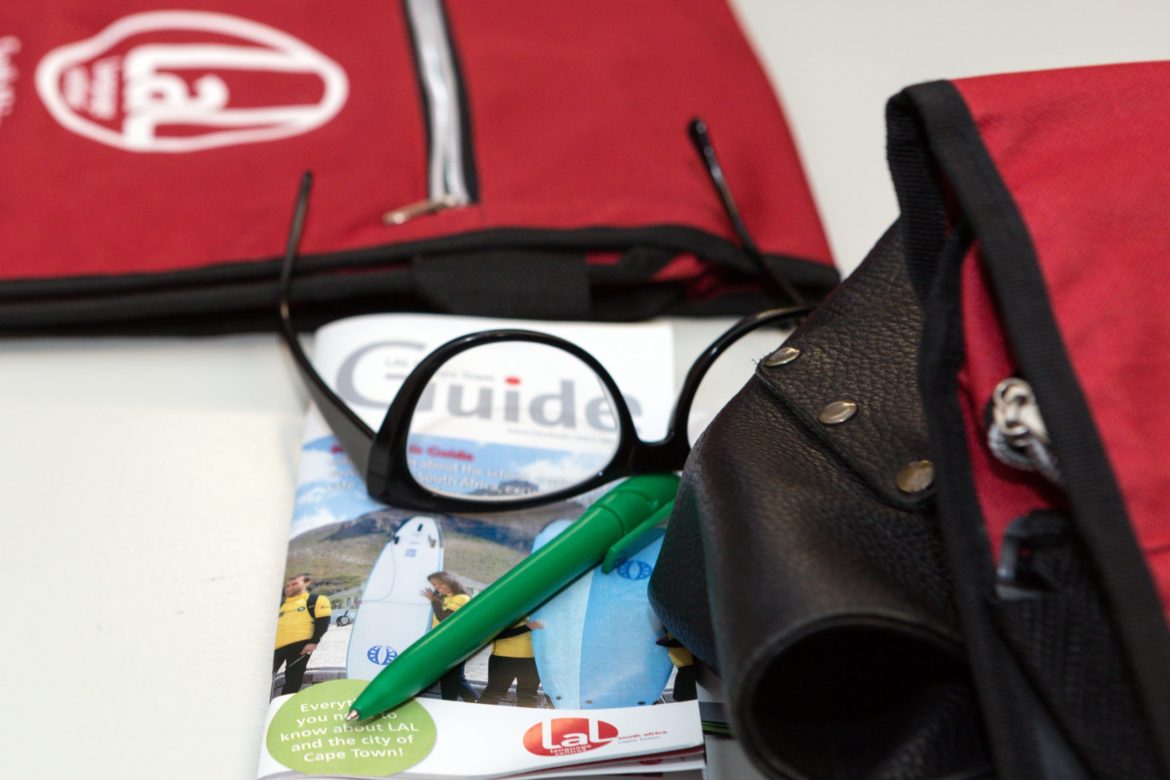

Studies have shown that taking notes during a lesson is more effective than making notes later out of a textbook, or using ready-printed notes. They also show that you will have a better memory and understanding of what you’ve learned if you write your notes by hand, instead of typing them. If you don’t see yourself as much of a note-taker, hopefully these facts as well as how fun and rewarding it can be when done correctly will change your mind. We’ve tailored this advice just for you to learn how to take notes for English lessons specifically.
1. Use the Cornell Notes method
The Cornell Method is a notes-taking method that has been tried-and-tested to make studying and remembering what you’ve learned easier. Prepare a few pieces of paper in the following way before class. Rule a line across the bottom of the page, leaving about 6 lines underneath.
Divide the main portion of the page (above the line you just ruled) into two columns, a skinny one on the left, and a wide column on the right. Rule another to separate the two columns.
When you’re in class, you’re mostly going to use the Notes Column. This is the wide column on the right-hand side of your page. Write as many notes as you possibly can in this space during your lessons.
Next, move to the skinny column next to your Notes Column. This is called the Cue Column. Here, you will write down any questions or cues you can think of relating to all your notes. For example, some of them might be questions you can expect in an exam, and other cues can be as simple as how to order food in English. When you need to study or revise from your notes, you cover up the Notes Column, and use the Cues Column to test yourself.
The section at the bottom is your Summary. Write a quick summary of everything on the page above so that it’s easy to find exactly what you’re looking for when you’re going through all your notes at a later stage. You can simply flick through them all, glancing at the bottom of each page.
2. Use mind maps for vocabulary
Mind maps are incredible when it comes to studying vocabulary. They work well because being able to see the whole picture, and the way the small parts relate to each other, is a great way to improve your memory. Many students who use mind maps get into their test or exam, redraw their mind maps (which are easy to remember because the information in them flows from a single source) and use them to answer questions.
Put a category of words in the middle of your page, sport for example. Branching off of that, make a list of different sports. Branching off from each of those, include positions of players, different types of balls, game play terminology, etc. Whenever you learn a new English word in these categories, add them as a smaller branch.
The best thing about mind maps is that you can continuously add to them without having to rewrite your notes whenever you get new information. So make sure to plan ahead and leave spaces around all your branches for even more vocab.
3. Create information tables out of sticky notes
We love this idea so much, especially for grammar! You have a word and you need to be able to use it in the past, present and future tense. Write each version of the word on a different sticky note, and stick them in your notes on top of each other. Make sure the present tense version is on top. When you’re studying you can test yourself on your tenses, and just lift up the sticky notes to see different versions of words.
You can also write out an entire sentence, with one word per sticky note. Put sticky notes with different tenses, plurals, verb uses and more under their words. What this does is turn a sentence into a table with different layers, allowing you to work on your sentence structure in an interactive way. Turn it into a full table by creating different sentences with the same structure and presenting them with sticky notes underneath each other.
4. Write out pronunciation information
Proper pronunciation is a big part of learning any new language. When you’re studying, it can be annoying and time-consuming to use Google or an app to listen to pronunciation. Instead, when you’re in class or out and about, physically write out the pronunciation according to how the word sounds instead of how it should be spelled.
Add these pronunciations to your notes, mind maps and sticky note tables, so that you can practise speaking at the same time as memorising words and working on improving your grammar and sentence structure.
5. Swap notes with your classmates
In any class, it’s natural for different people to pay more or less attention to different things. And this can work out in your favour. Once you are happy with your notes, offer to swap them with someone else’s. This will give you the chance to update your own notes with anything you may have missed, and vice versa.
It’s also an incredible opportunity to practise your skills. If the other students in your class are from other countries, English is probably the language you all have in common. You can discuss your notes with each other, and make friends along the way, all while getting natural English practice.
6. Organise your notes in a language learning planner
We recommend starting with buying a ring binder file or folder to keep all your notes in. This works better than a notebook because you can move your notes around, and add new ones into the sections where they belong. At the beginning, dedicate a few pages to your English-learning goals, leaving space for you to track them over time so that you can see your progress visually.
Then divide the rest of your notes up into sections the following sections:
- Vocabulary – This is where you will file all your vocab mind maps and word lists. Try to organise them according to theme and use stickers or doodles to make the pages more attractive and more memorable.
- Grammar – Organise these notes according to rules and pieces of sentence structure. For example, keep all your notes on verbs together, and all your notes on tense rules together. Colour-code each section so you can find what you’re looking for easily, without having to read a bit of every page to find out what’s on it.
- Phrases, idioms, swear words and slang – You probably won’t be tested on this section too much, but it is important to take note of them when you hear them or see them written down. Listening to podcasts, reading and chatting to locals in English will include all of these things, and it’s important to make an effort to learn what they mean. This will help with your understanding, and also prevent you from saying the wrong things at the wrong times too often.
- Writing – If you’re keeping a journal, writing a story for class, making lists or even just practising a different alphabet from the one you’re used to, this is a good spot to keep everything you’ve created. As you learn more, you can look back to the beginning of this section to see how far you’ve come.
- Exercises – This is where you will keep all your class practice exercises, as well as those you’ve done in your own time. Try going back to redo the exercises you struggled with as motivation
Will you be taking your notes differently the next time you’re in class? If you want to learn to speak English inside the classroom and out in the real world, our courses include exciting activities and excursions in the beautiful Cape Town. Register now.
